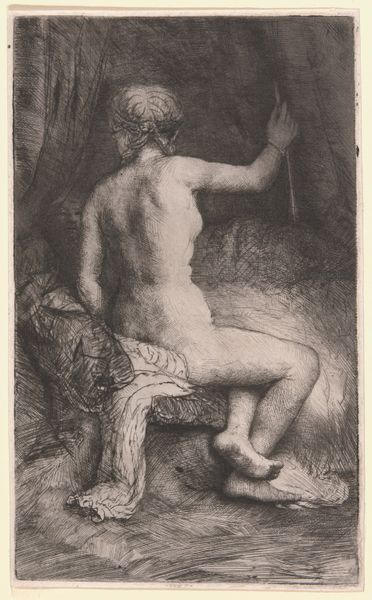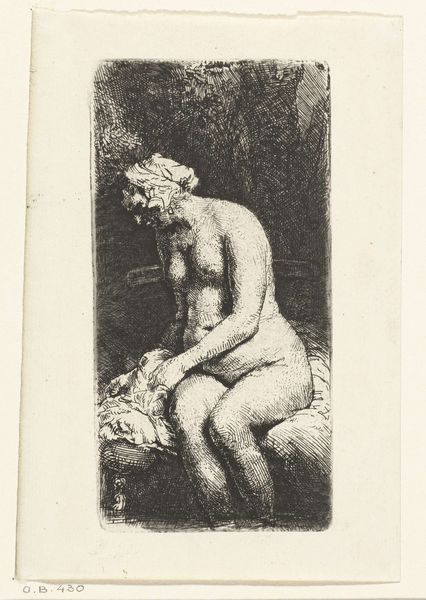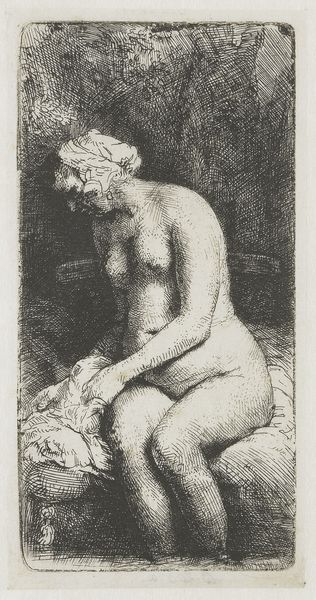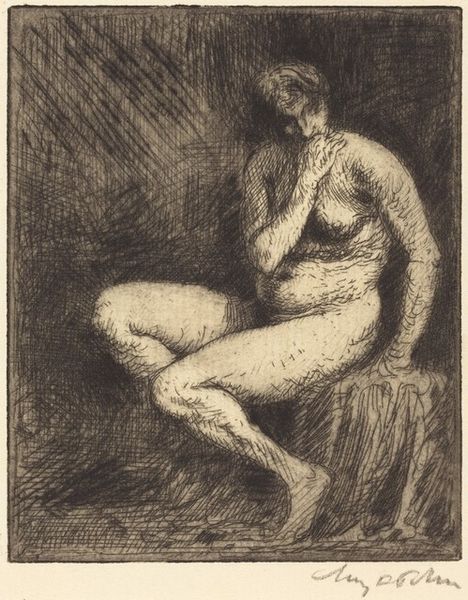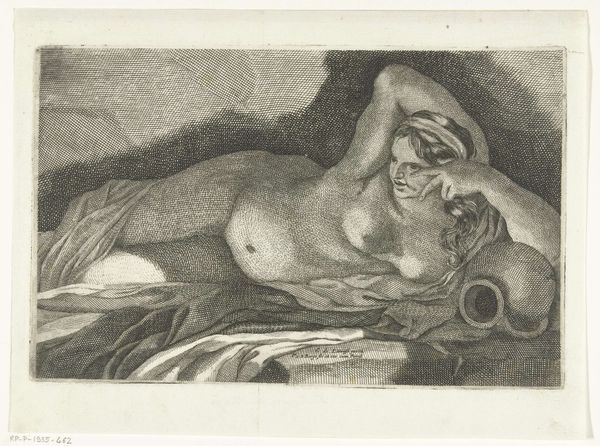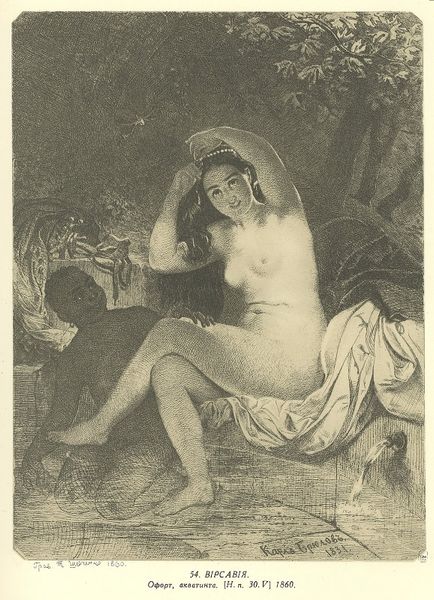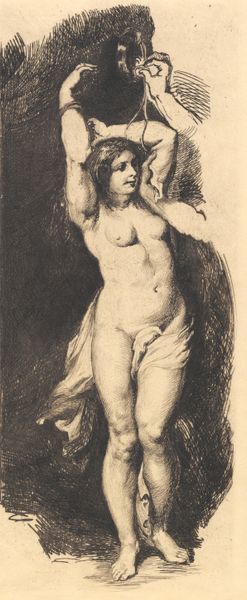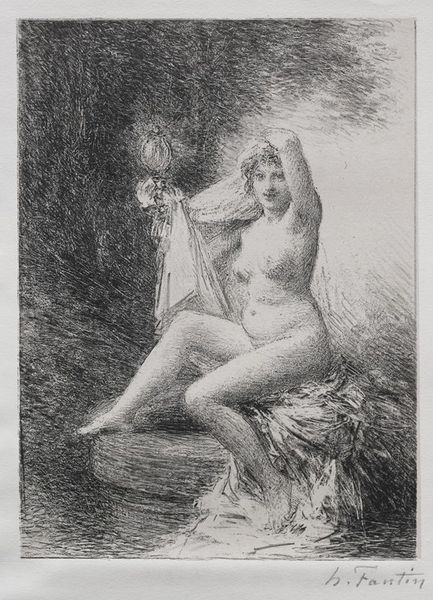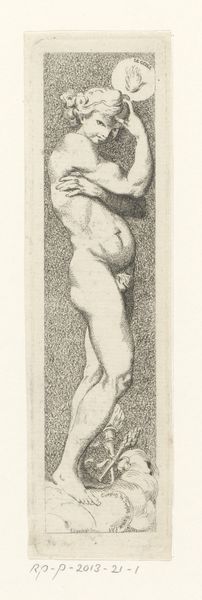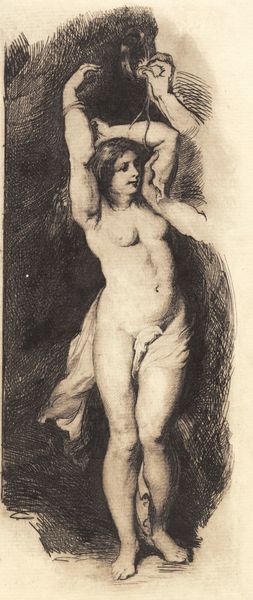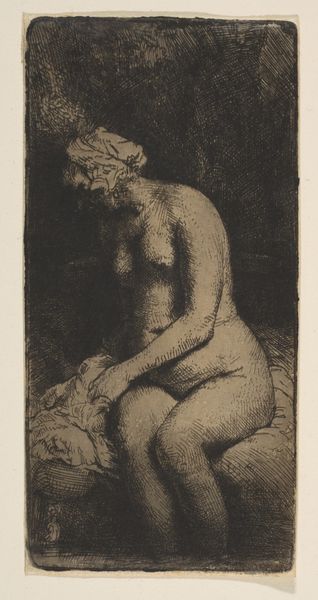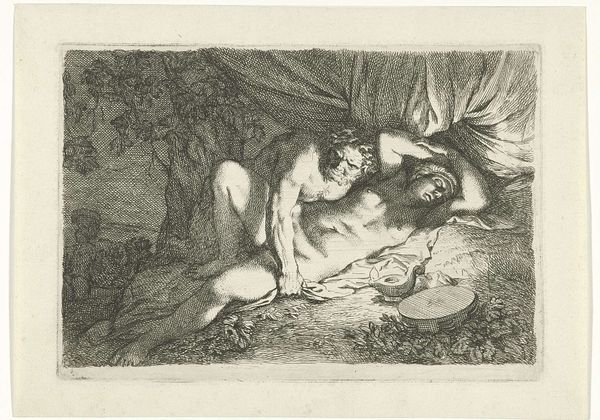![['Woman with the Arrow', 'Woman with the Arrow'] by Rembrandt van Rijn](/_next/image?url=https%3A%2F%2Fd2w8kbdekdi1gv.cloudfront.net%2FeyJidWNrZXQiOiAiYXJ0ZXJhLWltYWdlcy1idWNrZXQiLCAia2V5IjogImFydHdvcmtzLzRmMDhiMWJiLWQ3MzUtNDI1OS1hMWNkLThiZTVlZTM3NGE2Yy80ZjA4YjFiYi1kNzM1LTQyNTktYTFjZC04YmU1ZWUzNzRhNmNfZnVsbC5qcGciLCAiZWRpdHMiOiB7InJlc2l6ZSI6IHsid2lkdGgiOiAxOTIwLCAiaGVpZ2h0IjogMTkyMCwgImZpdCI6ICJpbnNpZGUifX19&w=3840&q=75)
print, etching
#
portrait
#
baroque
# print
#
etching
#
portrait reference
#
genre-painting
#
nude
Dimensions: height 204 mm, width 123 mm
Copyright: Rijks Museum: Open Domain
Editor: This is Rembrandt van Rijn's "Woman with the Arrow," made in 1661. It's an etching currently housed at the Rijksmuseum. There's a striking textural quality, almost tactile. How does Rembrandt's choice of materials contribute to our understanding of the piece? Curator: Consider the labour involved. Etching, particularly with the level of detail we see here, demands significant skill and time from the printmaker. The production process wasn't merely a mechanical reproduction; it was a meticulous craft. The resulting lines, born of careful labor and chemical processes on a copper plate, speak to a tension between craft and "high art." How does this tension shape our viewing experience? Editor: It makes me wonder about the market for these prints at the time. Who was consuming them and how did their value relate to larger paintings? Curator: Exactly! Prints like this one made art more accessible to a burgeoning middle class. But think too about the consumption of images themselves. In a society with less visual media, each print carried more weight, more meaning. Rembrandt was savvy; he knew he was producing a commodity and seems conscious of the market as another material component of his practice. Do you feel that he gives us some clue as to that consciousness? Editor: It does seem very deliberate. It's almost as if he anticipated that someone like me would be thinking about it centuries later! Thank you for shifting my perspective. Curator: My pleasure. Considering art through the lens of production and consumption unveils fascinating new dimensions, doesn’t it? I find the materials, and means, of production of such great works so very fascinating.
Comments
rijksmuseum about 2 years ago
⋮
['Modelling with raised arms is tiring. To provide this woman with some relief, she most likely held onto a cord. Rembrandt set her in a narrative context by transforming the cord into an arrow and introducing the face of a man in the darkness at the left. Perhaps she represents Venus who takes away Cupid’s arrow; the scene has also been interpreted as Cleopatra with her lover.', 'Modelling with raised arms is tiring. To provide this woman with some relief, she most likely held onto a cord. Rembrandt set her in a narrative context by transforming the cord into an arrow and introducing the face of a man in the darkness at the left. Perhaps she represents Venus who takes away Cupid’s arrow; the scene has also been interpreted as Cleopatra with her lover.']
Join the conversation
Join millions of artists and users on Artera today and experience the ultimate creative platform.
